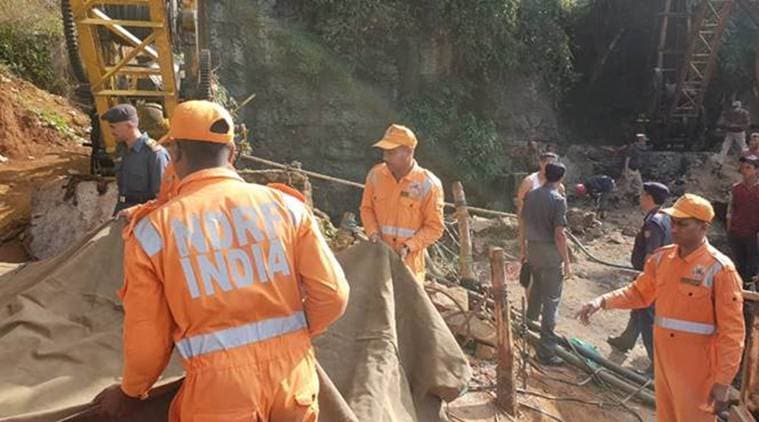Dark recesses
Meghalaya tragedy reveals absence of regulation, state complicity in rat-hole mining

The mining tragedy at Ksan, in Lumthari, East Jaintia Hills, Meghalaya would have gone unreported had there not been a lone survivor — Sayeb Ali of Panbari, Assam. This is not the first time that a tragedy has struck the state’s rat-hole mines. If this inhuman form of coal mining is not halted completely, we can be sure that many more labourers will be buried because mine caving accompanied with flooding is not an unknown phenomenon.
In 1992, nearly 30 mine labourers in South Garo Hills were caught in a similar flood — about half of them escaped death somehow. The rest were never found. In 2012, 15 miners were buried in a mine in Garo Hills. Their bodies too were not recovered. Most of the mine workers are migrant labourers, forced by stark poverty to undertake this hazardous work.
Nearly three weeks after the disaster in Ksan, pumps were sourced from the Odisha Fire Service. These can suck out 1,600 litres per minute. However, the water in the mine remained at the same level. Similar pumps were deployed to pump out water from the surrounding abandoned mines as well but the water level went down by a mere six inches. The pump manufacturing company, Kirloskar Brothers, had earlier talked of sending100 HP pumps but these have not yet arrived at the accident site, and water continues to leak into the ill-fated mine. Mining expert Jaswant Singh Gill, who is known for having rescued 65 miners in 1989 from the Mahabir mines in Raniganj, West Bengal, has rightly asked: Do the agencies present at the site, the NDRF, the Indian Navy divers and mining engineers from Coal India Ltd, have knowledge of the area’s topography? And can they get a handle on where exactly the water is flowing into the mine in order to drain out its source or seal it completely?
On December 29, when I visited the mine, the NDRF told me that the water is 176-feet deep. The navy divers cannot plunge straight into a perpendicular hole, which branches out into horizontal rat holes. They are trained to dive into the sea and in open waters, not into a hole that is barely 10 square feet. The mine in the Jaintia Hills is not likely to have enough oxygen, even though it is said to have some air pockets. Moreover, the water inside is very cold, perhaps even freezing — we experienced this while crossing the knee-deep Lytein river at three places to reach the mine site. One ardently hopes that the miners can survive the cold inside, considering this is winter.






































No hay comentarios:
Publicar un comentario